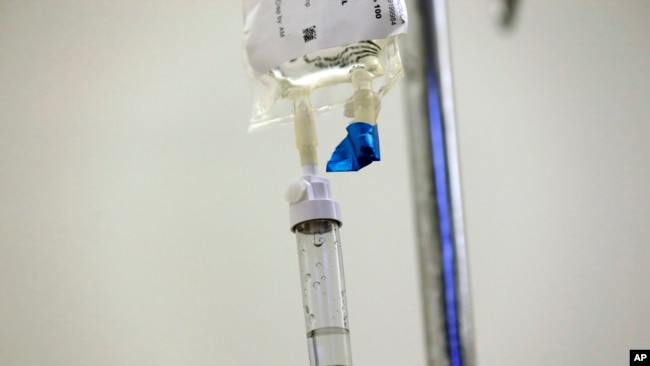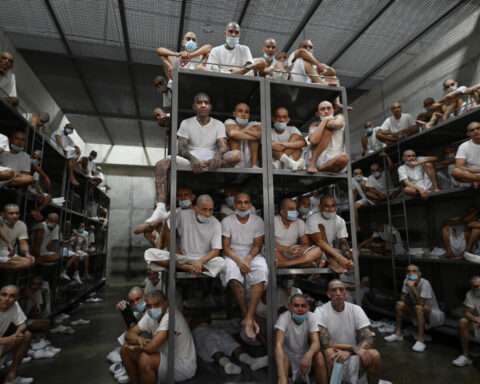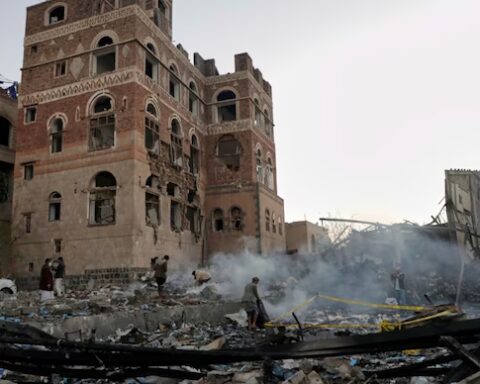The Biden administration launched a plan Wednesday to reduce the death rate from cancer by at least 50% over the next 25 years, a continuation of the 2016 “cancer moonshot” program that President Joe Biden led as vice president in the Obama administration.
“It’s bold. It’s ambitious, but it’s completely doable,” Biden said at the White House launch event. He said his plan would turn cancer from a death sentence into a chronic disease that people can live with, and that it would create a more supportive experience for cancer patients and their families.
Biden urged Americans to get screened, noting that 9 million cancer screenings were missed in the country during the pandemic. He established what he called a “cancer cabinet” — officials who will coordinate and harness the federal government’s approach to fight cancer. He also called on Congress to provide $6.5 billion to boost medical research through a proposed new agency — the Advanced Research Projects Agency for Health.
“This will be bipartisan. This will bring the country together, and quite frankly, other nations as well,” he said.
The fight against cancer is a deeply personal issue for Biden, who lost his elder son, Beau, to brain cancer in 2015. The loss is shared by many Americans: The American Cancer Society projects more than 609,000 cancer deaths and more than 1.9 million new cancer cases this year alone.

The administration aims to save more than 300,000 lives annually from the disease.
“More people are surviving cancer. More people are enduring cancer after being diagnosed than ever before,” Vice President Kamala Harris said at the event. Harris is a breast cancer survivor whose mother, a cancer researcher, died from colon cancer in 2009.
Dr. Karen E. Knudsen, CEO of the American Cancer Society, noted there has been a 32% reduction in the cancer mortality since 1991. But while mortality is a key indicator, Knudsen pointed out that some of the 200 different cancers are on the rise, including pancreatic, advanced prostate and early onset colorectal cancer.
“These are areas for which we still need to understand that dynamic through research and understand how to best put in prevention and mitigation strategies,” Knudsen told VOA. “Real success from the American Cancer Society perspective looks like a reduction in mortality and an approach to a cure for all types of cancer.”
The administration did not announce any new funding during the Wednesday launch. In 2016, as part of the “cancer moonshot” initiative, Congress authorized $1.8 billion over seven years, and roughly $400 million of that money has yet to be allocated. The National Cancer Institute oversees the initiative that aims to accelerate scientific discovery in cancer, foster greater collaboration and improve the sharing of data.
Still, this renewed push will give Americans hope, said first lady Jill Biden, who also spoke at the White House event.
“We will build a future where the word cancer forever loses its power,” she said.
Prevention and cancer disparity
Knudsen and other experts stressed the need for reducing “significant cancer disparities” across the United States.
Effective vaccines are available for some cancers such as cervical or head and neck, while other cancers can be detected early with systematic screenings — but only if people receive them, said Dr. Deb Schrag, chair of medicine at the Memorial Sloan Kettering Cancer Center in New York.
“Right now, we are leaving people, even entire communities, behind,” Schrag told VOA. “To achieve Biden’s goal, laser-sharp focus on equity must continue. Biden’s goal can only be achieved if we focus on prevention as well as treatment.”
If we provide people with what we already know in terms of treatment and prevention, about 25% of current deaths would be prevented, Dr. Otis Brawley said to VOA. Brawley, an expert in cancer prevention and control at the Johns Hopkins Sidney Kimmel Comprehensive Cancer Center in Baltimore, pointed to American Cancer Society data showing that cigarette smoking accounted for the highest proportion of cancer cases and deaths, followed by excess body weight and alcohol intake.
“People die because they do not get adequate care,” he said.
But early detection is not just a matter of health care access. For some people, it’s also overcoming the belief that if you feel healthy, you don’t need screening, said Robert K. Brown, who survived leukemia in his early 20s and chronicled his recovery in his memoir, Hundred Percent Chance.
Brown, who has been cancer-free for more than 30 years, spoke to VOA as he was making funeral arrangements for an uncle who died of esophageal cancer just days ago.
“He passed away pretty quickly from something that could have been treatable had it been caught sooner,” Brown said. “And that’s the stuff that I hear over and over again.”
Pandemic impact
“Whenever there was a peak of COVID, there was a decline in screening,” said Knudsen of the American Cancer Society. “Those lead to later diagnoses, patients presenting with more advanced disease that are more difficult to treat.”
Cancer patients are more susceptible to severe symptoms and deaths from a COVID-19 infection, especially those who cannot be vaccinated because of their cancer treatment plan, Knudsen said. But even cancer patients eligible for vaccination can sometimes be immunocompromised, meaning that they can’t mount the same type of immune response compared with a healthy individual.
Knudsen said Biden’s initiative might also impact people outside the U.S; it could help connect with the larger oncology community internationally that wants “to both learn from us and share their successes with us as well.”
Patsy Widakuswara






